June 16, 2025
目次
- 1 Japan’s Nippon Steel Deal: The Golden Share Revolution
- 1.1 Chapter 1: Anatomy of the “Golden Share” – A New Control Mechanism
- 1.2 Chapter 2: The Acquisition Drama – A Political Storm
- 1.2.1 Act 1: Announcement and Immediate Political Backlash (December 2023 – Early 2024)
- 1.2.2 Act 2: CFIUS Review and Politicization (2024 – January 2025)
- 1.2.3 Act 3: Legal Counterattack and Administration Change (January 2025)
- 1.2.4 Act 4: Trump Administration’s Dramatic Policy Reversal (January – June 2025)
- 1.3 Chapter 3: The National Security Agreement (NSA) – A New M&A Model
- 1.4 Chapter 4: Expanding “Economic Security” Concept and CFIUS Transformation
- 1.5 Chapter 5: Stakeholder Positions and Influence Analysis
- 1.6 Chapter 6: Strategic Implications for Japanese Companies
- 1.7 Conclusion: New Realities in the Economic Security Era and the Future of Japanese Companies
- 1.7.1 Irreversible Expansion of Economic Security Concepts
- 1.7.2 New Regulatory Environment with No Exceptions for Allied Companies
- 1.7.3 Complexity from Political-Economic Fusion
- 1.7.4 The New Paradigm of “Coexistence M&A”
- 1.7.5 Strategic Implications for Japanese Companies
- 1.7.6 Finally – As a Navigation Chart for the New Era
- 1.7.7 References
On June 14, 2025, after an 18-month political storm, Nippon Steel’s acquisition of US Steel was finally approved. However, this approval came with unprecedented conditions. The US government will hold a “golden share,” granting it permanent veto power over critical corporate decisions. This acquisition saga reveals the new reality of international M&A in the era of economic security, offering crucial insights for Japanese companies’ US investment strategies.
The most notable aspect of this acquisition approval is the US government’s ownership of a “golden share.” This mechanism represents an extremely unusual measure in US M&A history.
A golden share, also known as a “veto share,” is a special type of stock that grants its holder strong veto or approval rights over specific corporate decisions, even with just a single share. While ordinary shares carry voting rights proportional to ownership percentage, a golden share can exercise veto power over major decisions such as charter amendments, mergers, and acquisitions with just one share.
Historically, golden shares were introduced in the UK under Margaret Thatcher’s government in the mid-1980s for privatized companies in telecommunications, aviation, and energy sectors, used to prevent foreign takeovers and maintain domestic control. Recently, they have gained international attention as the Chinese government holds golden shares in private tech companies like Tencent, Alibaba, and ByteDance to strengthen content regulation and data management controls.
The Uniqueness of Golden Shares in the US
- US stock exchanges do not permit golden share issuance after listing
- However, companies with pre-listing golden shares may still go public
- They have never been used as a standard CFIUS mitigation measure
- Their application to allied nation companies is unprecedented
Specific Restrictions Imposed on Nippon Steel
According to Commerce Secretary Lutnick’s social media posts, the following actions require US presidential consent for Nippon Steel to implement:
- Headquarters Relocation Ban: Cannot move US Steel’s headquarters from Pittsburgh, Pennsylvania
- Name Change Prohibition: Cannot change the historic US Steel corporate name
- Investment Reduction Ban: Cannot reduce, abandon, or delay the promised $14 billion (approximately 2 trillion yen) in capital investments
- Offshore Transfer Prohibition: Cannot move production or employment outside the United States
- Plant Closure Restrictions: Cannot close or idle US plants except for normal temporary shutdowns for maintenance
- Other Restrictions: May include constraints on employee compensation and overseas raw material procurement
Furthermore, according to Pennsylvania Senator Dave McCormick and others, the golden share includes powers to prevent steel production level reductions and requires US government approval for appointing certain board members.
The Meaning of a “Permanent” Golden Share
Secretary Lutnick emphasized that this golden share ownership is “permanent” and expected to be inherited by future administrations beyond the Trump presidency. This means that even as Nippon Steel acquires 100% of US Steel’s common stock and makes it a wholly-owned subsidiary, an extremely unique control structure will permanently continue where important management decisions cannot be executed without US government approval.
There are significant interpretive differences among stakeholders regarding the nature of this golden share. Understanding this is key to decoding the political dynamics of the deal.
| Speaker | Claim | Background/Intent |
|---|---|---|
| President Donald Trump | “We own the golden share, and I control it. This gives us total control, 51% American ownership.” | Political messaging: Positioning as an “America First” policy victory |
| Nippon Steel Executive | “A certain degree of management freedom is necessary. Without it, an agreement might have been impossible.” | Accountability to investors: Assuring shareholders of maintaining management autonomy |
| Commerce Secretary Howard Lutnick | “The permanent golden share gives the US government the right to block any action it chooses.” | Government position: Emphasizing the strength and permanence of oversight authority |
| Jim Secret, Former Treasury Official | “It sounds like flashy rhetoric, but it’s actually a traditional CFIUS agreement that has been beefed up.” | Legal expert analysis: Interpreting as an extension of existing mitigation measures |
This rhetorical divergence represents the political finesse at the heart of making the deal work. The powerful “golden share” designation functioned as a symbolic device for President Trump to declare political victory, enabling him to deflect domestic political criticism. Meanwhile, in the legally binding actual documents, room was likely preserved for Nippon Steel to maintain necessary management discretion outside specific veto areas.
* * *
Chapter 2: The Acquisition Drama – A Political Storm
Nippon Steel’s acquisition of US Steel, from its December 2023 announcement to final approval in June 2025, was continually buffeted by American political storms. This process provides a valuable case study of how economic rationality and political reality collide and ultimately find compromise.
Act 1: Announcement and Immediate Political Backlash (December 2023 – Early 2024)
On December 18, 2023, Nippon Steel announced plans to acquire US steel giant US Steel for approximately $14.9 billion in an all-cash transaction, making it a wholly-owned subsidiary. This acquisition aimed to elevate Nippon Steel to world-class steelmaker status and dramatically enhance its global competitiveness.
However, the announcement immediately triggered fierce political backlash within the United States. US Steel, founded in 1901, is a historic company that once dominated most of America’s steel production – an iconic symbol of American industry. Therefore, this transaction was perceived not merely as a business deal but as an issue concerning national identity and security.
Timeline of Initial Reactions
- December 18, 2023: United Steelworkers (USW) expresses fierce opposition immediately after announcement
- Late December 2023: President Biden states need for “careful review”
- January 2024: Former President Trump (then candidate) vows to “immediately block” the deal
- February-March 2024: Bipartisan congressional opposition emerges
The United Steelworkers (USW) showed particularly strong opposition. USW conducted a thorough opposition campaign, citing Nippon Steel’s “long history of unfair trade practices,” including 13 trade law violations certified by the International Trade Commission (ITC) and recent tariffs exceeding 200% imposed for illegal steel dumping.
Act 2: CFIUS Review and Politicization (2024 – January 2025)
The acquisition became subject to national security review by the Committee on Foreign Investment in the United States (CFIUS). CFIUS is an interagency committee chaired by the Treasury Secretary that reviews risks to US national security from foreign direct investment.
CFIUS Review Process
- First Review (45 days): Basic risk assessment
- Second Review (45-60 days): Detailed investigation and negotiation of risk mitigation measures
- Presidential Review (within 15 days): Final approval/rejection decision
Reviews consider supply chain resilience, maintaining technological leadership, cybersecurity risks, and protection of US citizen personal data.
In May 2024, the Department of Justice (DOJ) also issued a “second request” from an antitrust perspective, entering detailed review. This dual regulatory review significantly delayed the transaction timeline.
On January 3, 2025, President Biden signed an executive order formally blocking the acquisition, citing national security concerns. Biden stated that “steel production and workers are America’s backbone, and a strong steel industry owned and operated domestically is an essential national security priority,” asserting the acquisition could “undermine national security.”
Act 3: Legal Counterattack and Administration Change (January 2025)
In response to this decision, Nippon Steel and US Steel immediately counterattacked. In January 2025, both companies took the aggressive step of suing the Biden administration. In their complaint, they argued:
- The CFIUS review process was a “sham” distorted by political motives to secure USW support in the swing state of Pennsylvania
- It was a “purely political decision” not based on legitimate national security risk assessment
- Japan is one of America’s closest allies, and the acquisition would strengthen rather than weaken US national security
While this lawsuit had low probability of overturning the executive order itself, it served as an important strategic tool to publicly challenge the legitimacy of the administration’s decision and keep the deal alive.
Act 4: Trump Administration’s Dramatic Policy Reversal (January – June 2025)
When the Trump administration took office on January 20, 2025, the situation entered a new phase. Despite declaring during the campaign that he would “block this deal” and that “American companies should be owned by Americans,” President Trump began showing willingness to reevaluate the transaction after taking office.
Developments Under Trump Administration
- February 2025: Summit meeting with Prime Minister Shigeru Ishiba
- April 7, 2025: Orders CFIUS to conduct new 45-day review
- May 23, 2025: Expresses intention to approve acquisition plan
- May 30, 2025: Holds political rally at US Steel plant in Pennsylvania
- June 13, 2025: Signs executive order approving acquisition conditional on National Security Agreement
Behind this policy reversal was Nippon Steel’s significant enhancement of conditions:
| Item | Original Plan | Final Terms |
|---|---|---|
| Investment Amount | $2.7 billion | $14 billion (approx. 2 trillion yen) |
| Job Creation | Not specified | 70,000+ (up to 100,000) |
| Investment Timeline | Not specified | $11 billion by 2028 |
| Government Involvement | Standard CFIUS conditions | Permanent oversight via golden share |
Particularly important was the political rally held on May 30, 2025, at a US Steel plant in Pennsylvania. Before thousands of steelworkers, President Trump praised the deal as a “historic partnership” and “hugely successful agreement,” publicly expressing support. He repeatedly used words like “investment” and “partnership” rather than “acquisition,” constructing a narrative where he was the victor who extracted better terms for American workers and industry.
“This is not an acquisition. This is an investment in America, a partnership that will make our steel industry the strongest in the world. I protected and created 100,000 jobs. This is what America First delivers.”
– President Donald Trump (May 30, 2025, speech in Pennsylvania)
* * *
Chapter 3: The National Security Agreement (NSA) – A New M&A Model
At the heart of this acquisition approval is the National Security Agreement (NSA) concluded between Nippon Steel and the US government. This agreement contains provisions that overturn conventional M&A wisdom, presenting a new model for future international corporate acquisitions.
Unprecedented Scale of Investment Commitments
The core of the NSA is the massive capital investment legally committed by Nippon Steel:
Investment Commitment Details
- Investment by 2028: Mandatory new investment of approximately $11 billion
- Greenfield Projects: Includes initial investment in new plants to be completed after 2028
- Total Investment: May reach $14 billion combined with acquisition price
- Nature of Investment: Legally binding; reduction or delay impossible without US government consent
This investment scale is evaluated as the largest in Pennsylvania’s history. US Steel had lost competitiveness by sticking to outdated blast furnace technology while competitors like Nucor succeeded with more economical electric arc furnaces (EAF), resulting from poor investment decisions. The company itself warned that without investment from Nippon Steel, it could not raise funds necessary for facility modernization and might be forced to close plants or relocate headquarters.
Detailed Operational and Governance Guarantees
In addition to capital investment, the NSA stipulates legal commitments covering detailed aspects of corporate operations:
- Maintaining Corporate Identity
- Maintain US Steel’s name (change prohibited)
- Maintain Pittsburgh headquarters (relocation prohibited)
- Respect corporate culture and historical heritage
- Employment and Labor Protection
- Honor all existing union agreements
- Prohibit layoffs
- Maintain employee compensation levels
- Governance Structure
- Board majority must be US citizens
- CEO must be US citizen
- US government approval rights for important management decisions
- Production and Trade Commitments
- Maintain and expand US production
- Prohibit offshore production transfers
- Strengthen domestic supply chains
Characteristics of “Coexistence M&A” Shown by NSA
These commitments indicate a shift from traditional “control-type acquisitions” to “coexistence M&A.” While Nippon Steel formally acquires 100% of shares, it essentially shares management rights with the US government. This represents a new M&A model with the following characteristics:
- Hiding leadership “behind the scenes” while emphasizing economic effects upfront
- Globally integrating technology, production, and capital while maintaining formal independence
- Creating value under foreign company leadership while formally ensuring the “domestic operations” the US demands
Background of Nippon Steel’s Strategic Decision
Why did Nippon Steel accept such strict conditions? Clear strategic judgments lay behind this decision:
1. Strategic Importance of the US Market
The United States is the world’s second-largest steel consumer with expected stable growth. Particularly with expanding infrastructure investment and electric vehicle (EV) industry growth, demand for high-quality steel is trending upward. For Nippon Steel, securing a solid production base in this growth market is key to long-term growth strategy.
2. Countering Chinese Competition
In the global steel market, Chinese companies hold dominant positions backed by overwhelming production capacity. Nippon Steel aims to significantly increase production capacity through integration with US Steel, achieving economies of scale to strengthen global competitiveness.
3. Realizing Technological Synergies
Opportunities to deploy advanced technologies like decarbonization and high-grade electrical steel for EVs using US Steel’s facilities. This particularly aligns with the US government’s Green Transformation (GX) policies.
4. Geopolitical Risk Diversification
Breaking away from excessive dependence on Asian markets and building a stable business foundation based on the Japan-US alliance. This holds significant meaning as geopolitical risks in Asia, such as Taiwan Strait tensions, increase.
* * *
Chapter 4: Expanding “Economic Security” Concept and CFIUS Transformation
This acquisition review process clearly demonstrates how the concept of “economic security” in the United States has significantly changed, with CFIUS taking on new roles as its enforcement agency.
New Definition of Economic Security
President Biden’s Executive Order 14083, issued in September 2022, specifically defined five factors CFIUS should consider in reviews, dramatically expanding the definition of “national security”:
Five Factors Defined by Executive Order 14083
- Impact on Supply Chain Resilience and Security
- Foreign dependency risks in manufacturing capabilities, services, critical minerals, and technology
- Particularly strategic sectors like semiconductors, large-capacity batteries, pharmaceuticals, and rare earths
- “Supply chain review” aimed at reducing China dependence
- Maintaining US Technological Leadership
- Ensuring superiority in Critical and Emerging Technologies (CET) list sectors
- Microelectronics, AI, biotechnology, quantum computing
- Advanced clean energy technologies, agricultural infrastructure affecting food security
- Analysis of Investment Trends in Specific Sectors
- Evaluating cumulative impact, not just individual transactions
- Comprehensive judgment of technology transfer risks from multiple acquisitions
- Addressing Cybersecurity Risks
- Access to sensitive data
- Potential threats to election systems and critical infrastructure
- Impact on confidentiality and integrity of communications
- Protecting Sensitive Personal Data of US Citizens
- Protecting personal information including health and biometric data
- Preventing targeting of US citizens by foreign powers
These factors show a new paradigm that evaluates all economic activity from a security perspective, far exceeding the traditional military security framework.
CFIUS Politicization and New Role
CFIUS was originally designed as an institution that should conduct objective reviews based on evidence, excluding political influence. However, in this case, both the Biden and Trump administrations openly politicized this process.
Politicization Under Biden Administration
- Prioritizing political benefit of securing union (USW) support
- Considering electoral strategy in swing state Pennsylvania
- Conflating symbolic value of “domestic ownership” with security concerns
Re-politicization Under Trump Administration
- Using second review to achieve political and industrial policy goals
- Staging as “America First” policy achievement
- Emphasizing massive investment acquisition as personal accomplishment
The final executive order concluded that CFIUS found “credible evidence that (Nippon Steel) might take actions that could impair national security,” but those risks could be “appropriately mitigated” by the NSA. This shows CFIUS transforming from a mere risk assessment agency to a negotiation tool for extracting concessions and achieving policy goals.
Impact on Allied Nation Companies
Particularly noteworthy is that such strict review and conditions were imposed despite Japan being one of America’s closest allies. This clearly shows that review systems designed with “strategic competition” with China in mind also apply to allied nation companies. Japanese companies will need to:
- Provide detailed information on China dependency
- Design organizational structures separating US operations from China business
- Fundamentally strengthen cybersecurity systems
- Significantly expand government relations functions
* * *
Chapter 5: Stakeholder Positions and Influence Analysis
This acquisition drama involved diverse stakeholders, each acting with different objectives and strategies. Their interactions ultimately shaped the final deal structure.
United Steelworkers (USW) – The Strongest Opposition Force
USW maintained the most consistently strong opposition stance from the initial announcement through to the end. Even after final approval including the NSA and golden share, the union still harbors deep skepticism and hostility.
“We did not participate in discussions regarding the final agreement and cannot speculate on its contents. Nippon Steel’s promises are just public relations. Trust nothing until you see it in writing.”
– USW Statement (June 14, 2025)
USW’s Reasons for Opposition
- Historical Distrust: Deep-rooted distrust of Nippon Steel’s past trade violations (13 ITC-certified cases)
- Employment Concerns: Belief that foreign management threatens jobs long-term
- Wages and Benefits: Fear of deteriorating working conditions
- Political Influence: Negotiating power backed by strong political base in Pennsylvania
USW’s influence was enormous. Securing union support was a key factor in President Biden’s decision to block the deal. Even when the Trump administration ultimately approved the transaction, its structure (employment guarantees, union agreement compliance, plant closure prohibition) was specifically designed to neutralize USW’s core concerns.
US Steel’s management and shareholders acted with corporate survival and value maximization as top priorities:
- Overwhelming Shareholder Support: Approved $55 per share cash acquisition proposal with over 98% support
- Management’s Sense of Crisis: Recognition that external capital was essential for modernizing aging facilities
- Loss of Competitiveness: Reality of continuing to lose market share due to delayed transition to EAF technology
- Absence of Alternatives: Domestic acquisition proposals (Cleveland-Cliffs) offered lower prices and had antitrust issues
Political Actors – Determining the Deal’s Fate
| Politician | Position Evolution | Main Motivation |
|---|---|---|
| President Joe Biden | Consistent opposition → Blocking order | Securing union support, manufacturing protectionism |
| President Donald Trump | Initial opposition → Conditional approval | Political achievement through massive investment, “deal” victory |
| Senator Dave McCormick | Cautious → Conditional support | Securing investment for home state Pennsylvania |
| Senator John Fetterman | Consistent opposition | Worker protection, economic nationalism |
Competitors – Pursuing Self-Interest
Cleveland-Cliffs, the US steel competitor whose acquisition proposal for US Steel was rejected, fiercely opposed this deal:
- Accused Nippon Steel of dumping
- Claimed superiority of “pure American company solution”
- Attempted to block deal through political lobbying
- Ultimately failed to prevent competitive disadvantage
* * *
Chapter 6: Strategic Implications for Japanese Companies
The Nippon Steel-US Steel acquisition case provides important lessons and implications for future Japanese companies’ US investment strategies. How should they respond to new realities in the economic security era?
1. Sophistication of Political Risk Management
US investment is no longer purely a business decision. Political risk assessment and management have become the most critical factors determining investment success.
Key Points for Political Risk Management
- Understanding Election Cycles: Aligning investment decisions with presidential and midterm election timing
- Analyzing Congressional Power Dynamics: Mapping key committee composition and influence
- State-Level Politics: Investments in swing states carry particularly high politicization risk
- Union Relations: Early dialogue channel establishment is essential
- Public Opinion Monitoring: Predicting and addressing emotional backlash against “foreign acquisitions”
2. Techniques for Constructing “Partnership” Narratives
The narrative must be strategically constructed early as “investment and partnership” rather than “acquisition.”
Elements of Effective Narrative Construction
- Presenting Concrete Economic Benefits
- Early clarification of investment amounts and job creation numbers
- Quantifying ripple effects on regional economy
- Emphasizing public benefits like tax revenue increases
- Technology Transfer Appeal
- Strengthening US industry through Japanese advanced technology
- Contributions matching contemporary needs like green technology
- Contributing to maintaining US technological leadership
- Demonstrating Cultural Sensitivity
- Clearly stating respect for corporate history and traditions
- Early commitment to maintaining headquarters location and company name
- Continued engagement with local communities
3. Adapting to the New “Coexistence M&A” Model
Traditional “control-type acquisitions” have become difficult in important sectors. Adaptation to the new “coexistence M&A” model is necessary.
Design Principles for Coexistence M&A
- Maintaining Formal Independence: Portraying target company independence even after acquisition
- Phased Integration Approach: Avoiding rapid changes, integrating over time
- Utilizing Local Management: Appointing American CEOs and directors
- Ensuring Transparency: Regular information disclosure to government and unions
- Achieving Win-Win: Structural design where all stakeholders become winners
4. Fundamental Enhancement of Regulatory Response Capabilities
Response to regulatory authorities including CFIUS is no longer just the job of legal and compliance departments.
Required Organizational Capabilities
- Integrated Regulatory Strategy Team: Integration of legal, government relations, PR, and business departments
- Washington DC Presence: Information gathering and relationship building through permanent teams
- External Advisor Utilization: Cooperation with former government officials and specialist lobbyists
- Scenario Planning: Preparation for multiple scenarios including administration changes
5. Investment Decisions with Long-Term Perspective
Constraints like golden shares and NSAs limit management freedom in the short term. However, proper evaluation of long-term strategic value is important.
Perspectives for Long-Term Value Assessment
- Value of Market Access: Entry opportunities to protected US markets
- Technology and Talent Acquisition: Capability building through acquisitions
- Geopolitical Risk Diversification: Breaking away from Asia-centric concentration
- Deepening Alliance Relations: Contributing to Japan-US economic security cooperation
- First-Mover Advantages: Securing advantages through entry before regulatory strengthening
* * *
Conclusion: New Realities in the Economic Security Era and the Future of Japanese Companies
Nippon Steel’s acquisition of US Steel has become a case marking a turning point beyond a mere individual corporate M&A transaction. Let me summarize the new realities this deal demonstrates.
Irreversible Expansion of Economic Security Concepts
The concept of “national security” is no longer limited to responses to military threats. All economic activities – supply chains, technological superiority, data protection, employment maintenance – are now evaluated from a security perspective. This change is rooted in the structural factor of US-China confrontation and represents an irreversible trend.
New Regulatory Environment with No Exceptions for Allied Companies
Japan being America’s most important ally no longer means a regulatory “free pass.” Rather, because they are allied companies, higher transparency and accountability are required. Proof of “cleanliness” in all aspects – China relations, cybersecurity, technology management – becomes necessary.
Complexity from Political-Economic Fusion
The era of M&A based purely on economic rationality has ended. Factors difficult to quantify – political considerations, social acceptability, symbolic value – determine transaction success or failure. This demands new capabilities from corporate executives: political insight and negotiation skills.
The New Paradigm of “Coexistence M&A”
The traditional M&A model of “acquire and control” no longer functions, at least in politically sensitive sectors. Instead, “coexistence M&A” that pursues substantial integration effects while maintaining formal independence will become the new standard. This is a more sophisticated but more difficult approach to execute.
Strategic Implications for Japanese Companies
This new environment represents both threat and opportunity for Japanese companies:
The Duality of Threats and Opportunities
- Threats: Increased regulatory costs, constrained management freedom, normalized political risk
- Opportunities: First-mover advantages, access to protected markets, special status through alliance deepening
What’s important is accepting these changes as given conditions and adapting to the new game rules. Nippon Steel’s case demonstrated that strategically important assets are worth acquiring even at high cost.
Nippon Steel’s decision to accept permanent government oversight in exchange for investment exceeding 2 trillion yen was both courageous and realistically responsive to the demands of the times. Whether this “historic partnership” will deliver expected results remains to be seen. Its success or failure will serve as a touchstone for the future of Japan-US economic relations in the economic security era, beyond the fate of a single company.
For Japanese companies to succeed in the US market going forward, they must deeply understand and creatively adapt to these new realities. While it’s a difficult journey, it’s also a meaningful challenge contributing to deepening the Japan-US alliance and both countries’ economic prosperity. The Nippon Steel-US Steel case provides a valuable navigation chart for that challenge.
References
Deloitte | nippon.com | JRI | Toyo Keizai | Nippon Steel | NRI | CISTEC | PRESIDENT | Diamond | Shikiho | Wikipedia | M&A-CP
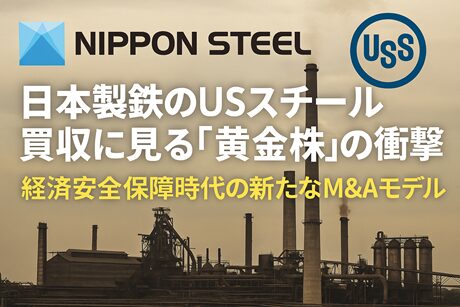
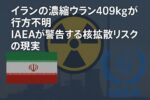
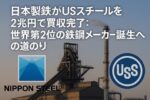

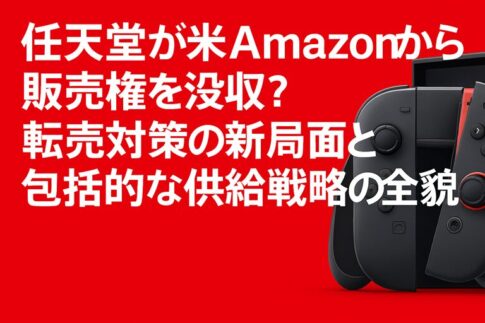
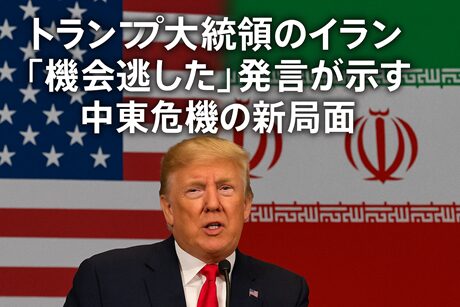

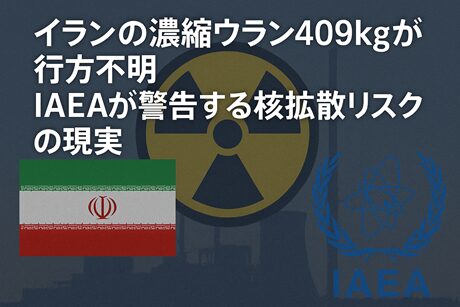

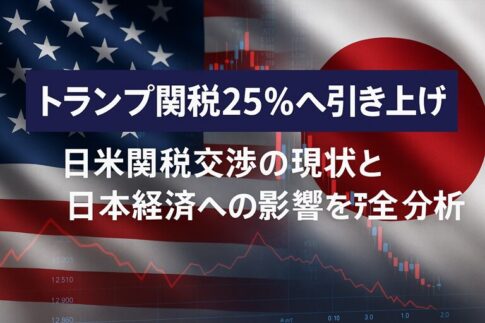
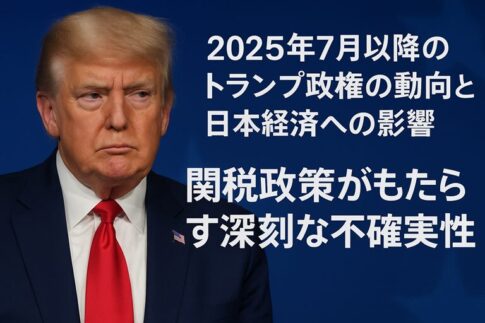

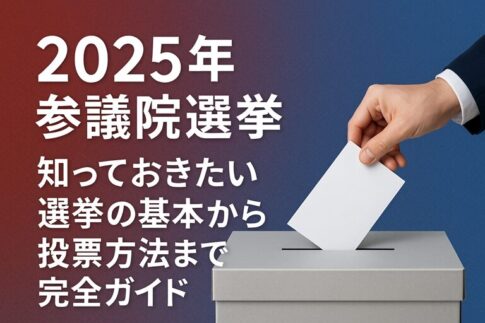
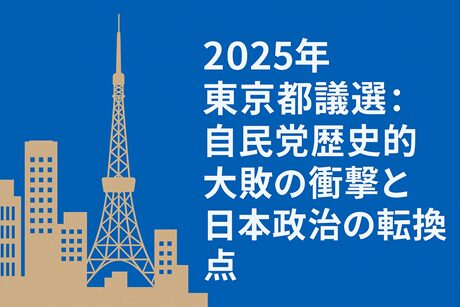

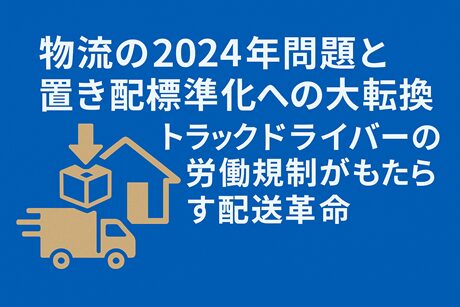

Leave a Reply